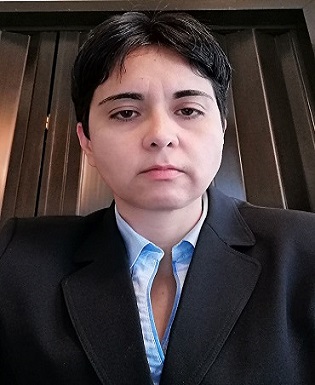Scientific Program
Keynote Session:
Title: Smart Material Systems - Future Trends and Applications
Biography:
Dr. Paul Motzki is currently working as Head Of The Research Division Sensors And Actuators At The Center For Mechatronics And Automation Technologies, Germany.
Abstract:
Will Update Soon
A PHP Error was encountered
Severity: 8192
Message: trim(): Passing null to parameter #1 ($string) of type string is deprecated
Filename: pastconference/past-program-schedule.php
Line Number: 239
Backtrace:
File: /efsdata/meetingsint-com/application/views/pastconference/past-program-schedule.php
Line: 239
Function: trim
File: /efsdata/meetingsint-com/application/controllers/Pastconference.php
Line: 128
Function: view
File: /efsdata/meetingsint-com/index.php
Line: 317
Function: require_once
Title: Defect detection of IC substrate based on Bi-direction Feature Pyramid Network
Biography:
Hao-Wei Lin received the B.S. degree in electrical engineering in 2019 from Tamkang University, Tamsui, Taiwan. He is a master student in the Graduate Institute of Automation Technology at National Taipei University of Technology, Taipei, Taiwan. He mainly researchs machine vision and makes applications in the automation industry. In most of his research time, He spent time researching the application of deep learning in automated optical inspection.
Abstract:
Automatic optical inspection is a typical technology in industrial processes. In recent years, deep learning has been widely used in automated optical inspection (AOI). Deep learning used in AOI brings benefit of defect detection performance. In this paper, the IC substrate is the inspection object. It depends on low-level visual task, which mainly involves the detection of structural features. In contrast, most of the current object detection networks deal with high-level visual tasks, and can’t achieve good results in defect detection of IC substrate. In the case of Feature Pyramid Network (FPN) has multi-scale feature map and its architecture transmits features from high-level semantics features to low-level structure features, which lead to the tiny defects in IC substrate could be ignored and missed detection. In this paper, we improved the FPN network architecture, the semantic message transmission from topdown in the original architecture is maintained in the feature pyramid, and a branch line of structural feature message transmission from bottom-up is added. Finally, multi-scale feature superposition is performed, so that the network can obtain structural feature messages from the branch line architecture to improve the problem of missing detection of tiny defects. In this paper, we use 697 training images and 129 testing images for multi-class defect detection, such as broken copper, laser marking, scratch and dust. Finally, the test results show that the proposed Bi-direction Feature Pyramid Network architecture can achieve recall of 92.7%, precision of 77.2% and F2-score of 93.3%, which are superior to the original structure's recall of 89.2%, precision of 75% and F2-score of 85.9%, respectively.
Title: Adaptive Neural Actuator Fault Tolerant Control for Discrete-time Unknown Nonlinear Systems
Biography:
Alma Y. Alanis, received the Ph.D. degree in electrical engineering from the Advanced Studies and Research Center of the National Polytechnic Institute (CINVESTAV-IPN), Guadalajara Campus, Mexico, in 2007. Since 2008 she has been with University of Guadalajara, where she is currently a Chair Professor in the Department of Computer Science and since 2016 is dean of PhD Program of Electronic and Computer Sciences. She is also member of the Mexican National Research System (SNI-2) and member of the Mexican Academy of Sciences.
Abstract:
Control systems constitute a fundamental stage in the development and implementation of new technologies and its advancements. As technology has advanced, so has systems’ complexity, in such a way that modern control systems must be capable of ensuring increasingly complex control objectives. Today, the systems to be controlled must not only consider their non-linearities, uncertainties and disturbances, which are phenomena already well studied; now it is also necessary to ensure their behavior under the presence of more challenging conditions such as those presented by faults, see M. T. Hamayun and Alwi (2016). Fault-tolerant control schemes are an important aspect in safety critical systems and seek to maintain overall system stability and acceptable performance in the face of faults and failures within the system as in M. T. Hamayun and Alwi (2016). There are different kind of classification about faults, in M. T. Hamayun and Alwi (2016) it is defined that faults can be classified as actuator fault, sensor fault or component fault, their location. In this talk, different fault profiles, associated with the actuators, are considered, faults at the component and sensor faults are not considered. Types of actuator can be classified as float failure, lock in place failure, hard over failure and loss of effectiveness; evidently there are faults that are easy to deal with them and there are hard fault that can be very destructive and they can cause irreversible damage to the system as in H. Alwi and Tan (2011). Therefore, increasing demands for safety, reliability and high system performance have motivated the need for fault-tolerant control and has stimulated research in this area. For the design of fault-tolerant controllers, many different design paradigms have been proposed in M. T. Hamayun and Alwi (2016).
A PHP Error was encountered
Severity: 8192
Message: trim(): Passing null to parameter #1 ($string) of type string is deprecated
Filename: pastconference/past-program-schedule.php
Line Number: 239
Backtrace:
File: /efsdata/meetingsint-com/application/views/pastconference/past-program-schedule.php
Line: 239
Function: trim
File: /efsdata/meetingsint-com/application/controllers/Pastconference.php
Line: 128
Function: view
File: /efsdata/meetingsint-com/index.php
Line: 317
Function: require_once
Title: Autonomous Robot Evolution
Biography:
Wei Li received the B.Eng. degree in automation and the M.Eng. degree in control science and engineering from the Harbin Institute of Technology, China, in 2009 and 2011, respectively, and the Ph.D. degree from the University of Sheffield, U.K., in 2016. He is currently an Associate Professor with the Institute of AI and Robotics, Fudan University. He has published more than 30 academic articles in peer-reviewed journals and conferences, such as the IEEE Transactions on Robotics and NeurIPS. His research interests include robotics and computational intelligence, and especially self-organized systems, and evolutionary machine learning.
Abstract:
This research will investigate the long-term vision of a technology enabling the evolution of entire autonomous robotic ecosystems that live and work for long periods in challenging and dynamic environments without the need for direct human oversight. Based on state-of-the-art 3D printing techniques with novel materials and a hybridised hardware-software evolutionary architecture - the research will address current weaknesses in robot design methodology by establishing self-reproducing robots that evolve their morphologies and controllers in real-time. Imagine an environment where autonomous systems (robots) are not designed by humans (or indeed designed at all) but are created through a series of steps that follow evolutionary processes. These robots will be “born” through the use of 3D manufacturing, with novel materials and a hybridised hardware-software evolutionary architecture. “Child” robots will learn in a safe and controlled environment where success will be rewarded. The most successful individuals will make available their genetic code for reproduction and for the improvement of future generations. Such a process will ultimately lead to a change in the way things are designed and manufactured. This research focuses on a disruptive robotic technology where robots are created, reproduce and evolve in real-time and real space. The long-term vision is a technology enabling the evolution of entire autonomous robotic ecosystems that live and work for long periods in challenging and dynamic environments without the need for direct human oversight. This means radically new autonomous systems are needed, where robots are conceived and born, rather than designed and manufactured. Such robots will fundamentally change the concept of machines, showcasing a new breed that can change their form and behavior, not in error but on purpose.
Title: Concept And Design of a Biomechanical System for the Human Arm
Biography:
Senior researcher at the Institute of Solid Mechanics, Romanian Academy. I work in the Mechatronics and Robotics department and I am focused on research in: concept and design of mechatronic systems: biomecanical systems; command and control of these systems; (nano)technolgies and materials; solid mechanics. I have got habilitation degree in 2017 and I coordinate doctoral theses in the field of mechanical engineering. My previuos work experience involves more than 20 years as professor at „POLITEHNICA” University of Bucharest, Romania – teaching in the field of manufacturing technologies and applied statistics in engineering. Since 2013, I have also worked in a private research and development SME, OPTOELECTRONICA-2001, focusing on laser radiation application in engineering and on technologies for manufacturing photovoltaic cells. My scientific activity results are dissaminated in more than 200 papers (published in journals and conference proceedings), 10 books (as first-author or, co-author), 30 research projects, 5 patents, etc.
Abstract:
Statement of the Problem: There are more than 60 years that has been carried on research on biomechanical system for the human arm. The purpose is to make an easier life for people who lack their arm. This study evidences main aspects related to the design and manufacture of a prototype for human arm prosthesis as follows: kinematic and kinetostatic analysis of hand fingers; 3D modeling of the biomechanical system; hardware – software platform; FDM printing; preliminary tests on the prototype subassemblies.






